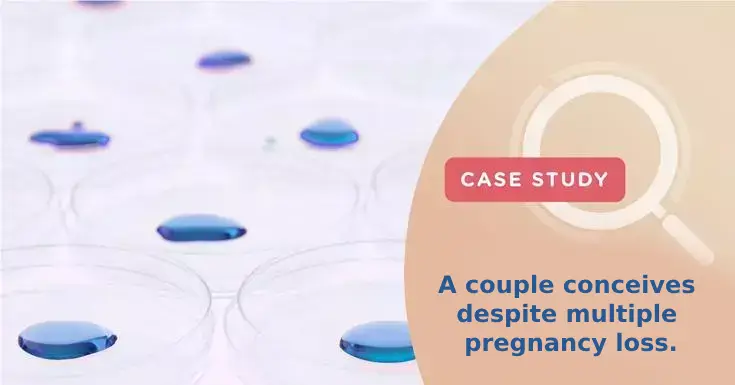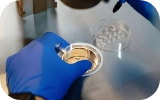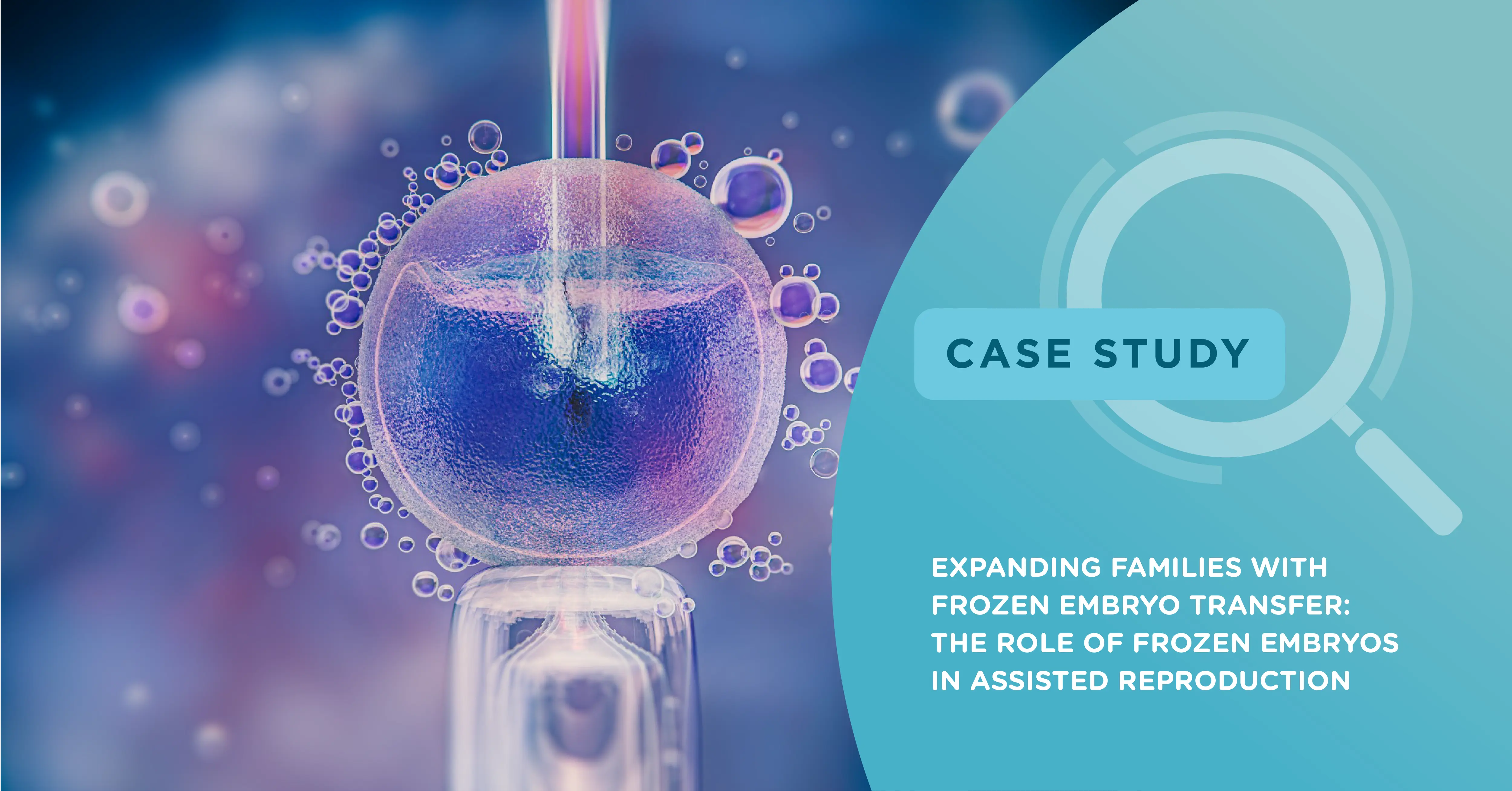A couple conceives despite multiple pregnancy loss. Thanks to Endometrial Receptivity Array (ERA).

Mrs. Nila, 32 years old woman from Chennai, was married from 5 years and was very keen on having a baby. However, she realised that like many other couples she and her husband had some fertility issues because of which she was not able to conceive.
Mrs. Nila had a history of bilateral tubal block and her husband also had a low sperm count. Over the years, they visited multiple clinics in Chennai and underwent few IVF related treatments. Their first 2 cycles of IVF/ ICSI had failed and nothing helped Mrs. Nila to conceive.
What is IVF-ICSI?
Intracytoplasmic Sperm Injection or ICSI is a superior and micromanipulation technique used in IVF treatments. Instead of allowing the sperm to fertilise the egg in a dish naturally, ICSI involves the embryologist’s injecting a healthy sperm, into the cytoplasm of an egg, using a fine glass needle, in a laboratory.
The ICSI procedure is generally followed by cryopreservation of all embryos. The embryos are subsequently planted in the uterine cavity once the endometrium is ready. Thus, ICSI is an assisted reproductive technique that increases the chances of pregnancy.
Consultation with Nova IVF Specialist
With great desire of having her own baby, she along with her husband decided to visit the Nova Fertility centre in RA Puram Chennai.
After primary consultation, the fertility specialists at Nova IVF got a few tests done for both. They understood her bilateral tubal block condition and devised a treatment plan accordingly for the couple.
When pregnancy does not take place, even with good quality embryos, evaluation of the uterine cavity is a key thing to determine endometrial readiness for implantation. Hence the fertility expert at Nova IVF advised the couple to undergo additional test – Endometrial Receptivity Array (ERA) to maximise the chance of implantation.
Understanding the condition of blocked fallopian tubes
Fallopian tubes are usually blocked by pelvic adhesions or scar tissue. These may be caused by following factors:
- Pelvic inflammatory disease – Scarring or hydrosalpinx that may be caused by inflammatory disease.
- Endometriosis – Endometrial tissue built up in fallopian tubes resulting in a blockage. Endometrial tissue on the outside other organs may also cause adhesions and blocked tubes.
- Certain sexually transmitted diseases (STDs) – Chlamydia and gonorrhoea can cause scarring and pelvic inflammatory disease.
- Past ectopic pregnancy – This can scar the fallopian tubes.
- Fibroids – These growths can block the fallopian tube, particularly where found in the uterus.
- Past abdominal surgery – Past surgery, more so, on the fallopian tubes, may lead to pelvic adhesions that block the tubes.
Diagnosing a blocked fallopian tube with HSG
Hysterosalpingography (HSG) is a procedure which is used to scan the inside of fallopian tubes to identify blockages. During HSG, the doctor introduces a dye into the uterus and the fallopian tubes.
The dye helps the doctor see more of the inside of fallopian tubes on the X-ray. An HSG can usually be done in the doctor’s office. This is usually done on the 12th or 13th day of the menstrual cycle. Side effects due to HSG are rare, but false positive results are possible. Also, this procedure causes some pain and discomfort on the day it is done.
Where the HSG doesn’t help make a definitive diagnosis, a laparoscopic examination may be done for further evaluation. If a blockage is discovered during the procedure, the doctors might also surgically clear it.
How is Endometrial Receptivity Array (ERA) test done?
Using a small sample of endometrial tissue, the ERA test establishes the most favourable day for embryo transfer. An endometrium sample can be easily taken by an experienced gynaecologist. By analysing 248 genes involved in endometrial receptivity, the ERA test will determine whether the endometrium is receptive or not at the time of sampling.
Steps in an ERA test:
- Endometrial biopsy
- RNA extraction
- NGS analysis
- Report
- Transfer timing according to the report
ERA testing thus helps identify the personalised window of implantation in case of displacement and will allow a personalised embryo transfer (pET).
Who should use the ERA test?
The ERA test is recommended for patients who have suffered recurrent implantation failure even with very high-quality embryos.
Why should ERA be done?
ERA test is recommended as about 30% patients have a displaced window of implantation and this results in an implantation failure.
Benefits of ERA and personalised embryo transfer
When performing the embryo transfer in a personalised way, chances of pregnancy are increased after the assisted reproduction treatment. The ERA test resulted in a 73% pregnancy rate in patients with implantation failure.
ERA outcomes & the journey towards conceiving
ERA test results of Mrs. Nila came out as post receptive, implying that the embryo transfer was being done 1 day late and hence resulting in an implantation failure. Therefore, a personalised embryo transfer was scheduled, and 2 day 4 embryos were transferred into Mrs. Nila’s 3rd day endometrium.
Thanks to ERA test and the timely transfer, Mrs. Nila was able to conceive and deliver twins. Mrs. Nila and her husband were delighted and thanked the Nova team for having detected the primary infertility cause, dealing with it so effectively, and helping them conceive and deliver twins in the 1st treatment cycle itself.
 Infertility Counselling
Infertility Counselling Female Infertility Treatment
Female Infertility Treatment Andrology Treatment
Andrology Treatment Fertility Enhancing Surgeries - Female
Fertility Enhancing Surgeries - Female Fertility Enhancing Surgeries - Male
Fertility Enhancing Surgeries - Male Endoscopy Treatment
Endoscopy Treatment IUI Treatment
IUI Treatment IVF Treatment
IVF Treatment ICSI Treatment
ICSI Treatment Advanced IVF Solutions
Advanced IVF Solutions Embryology
Embryology Vitrification Egg, Embryo, Sperm Freezing
Vitrification Egg, Embryo, Sperm Freezing Preimplantation Genetic Testing (PGT)
Preimplantation Genetic Testing (PGT) Donation Program Embryo / Egg / Sperm
Donation Program Embryo / Egg / Sperm Self-cycleTM IVF
Self-cycleTM IVF

 Self-cycleTM IVF
Self-cycleTM IVF
















Add new comment